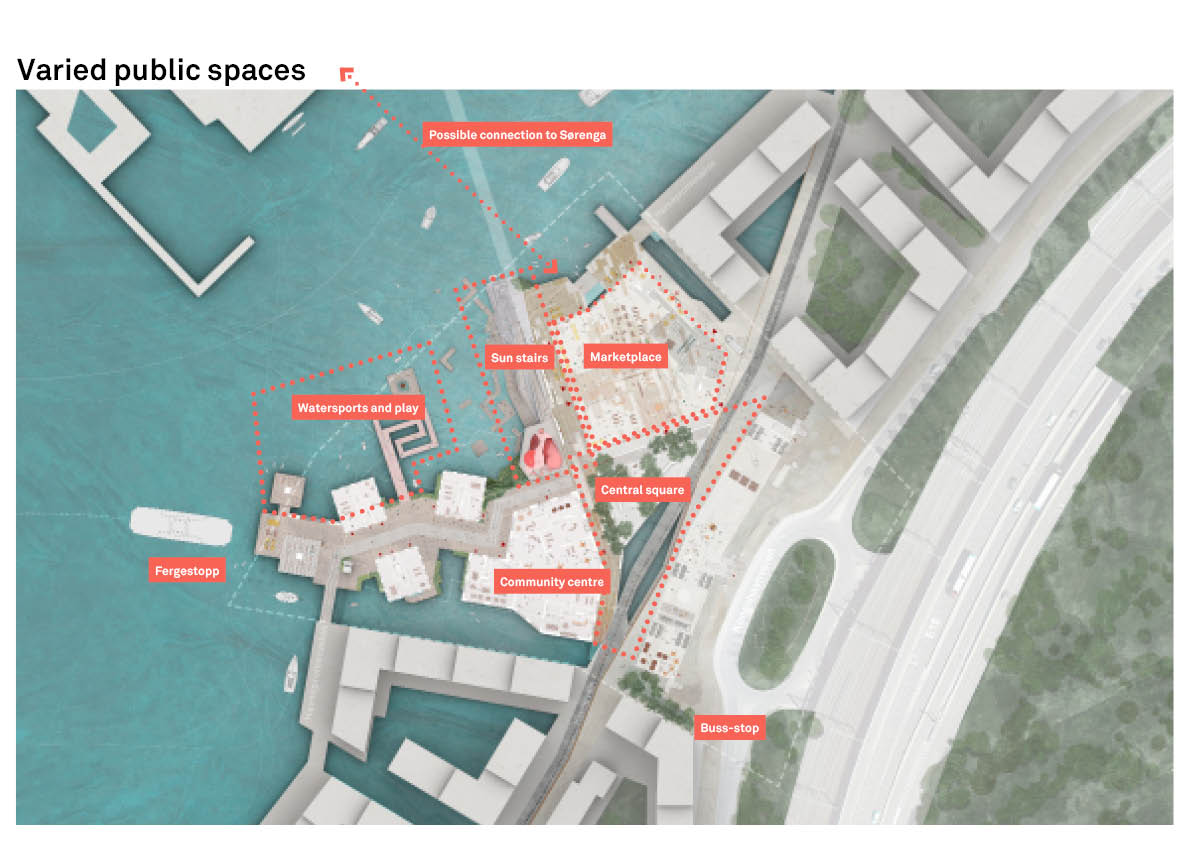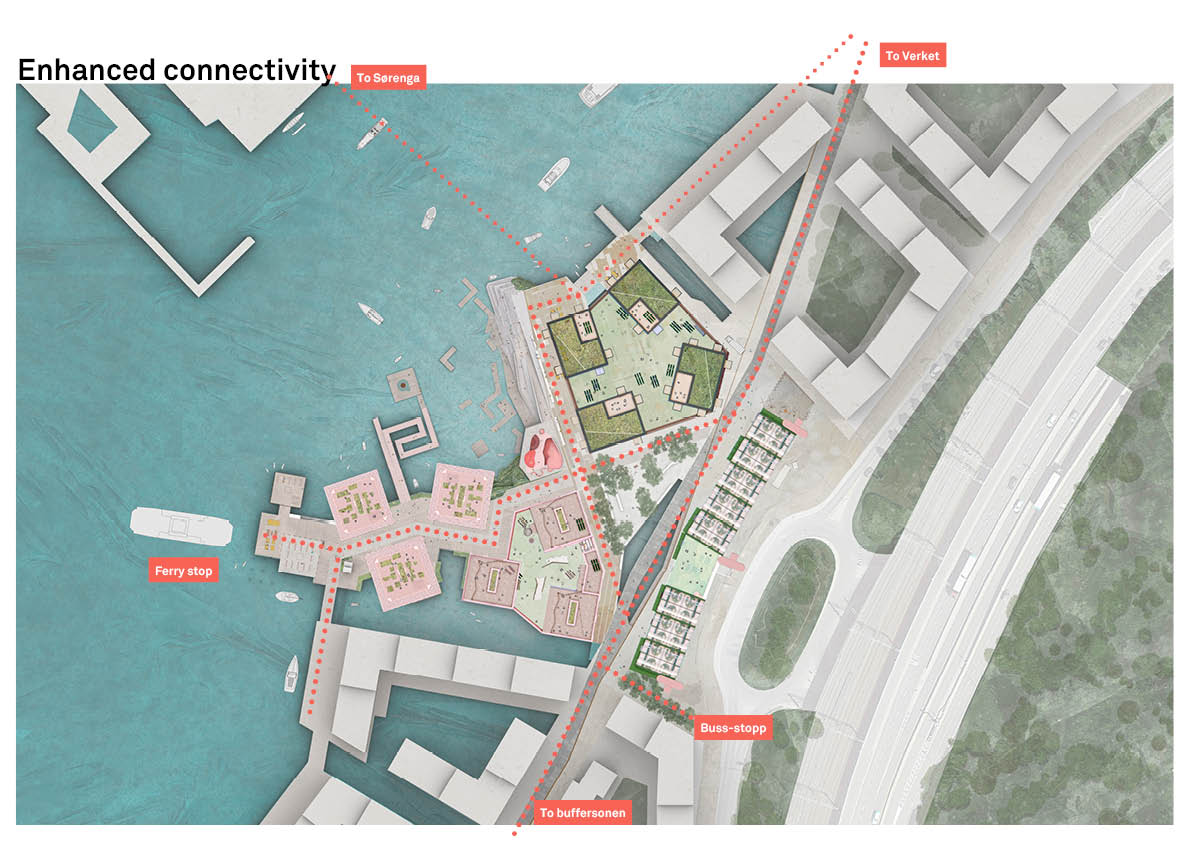One of the last waterfront sites of the city of Oslo, which represents an opportunity to create an inclusive and diverse ‘fjord city’LiveNorwayPlayUrban
Qualify
Conceive
Refine
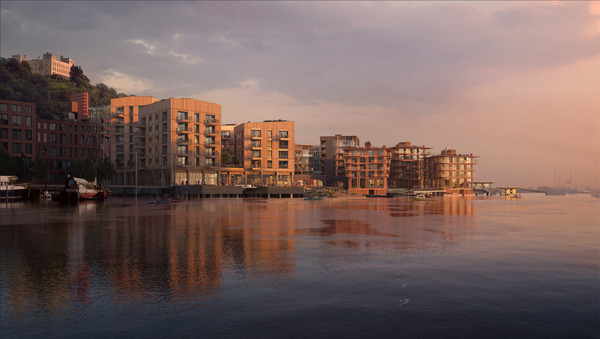
Designed by Londonon represented by Haptic Architects (lead), Morris+Company, Gort Scott and Mae, supported by Elliott Wood, Useful Projects, Periscope, Neighbourhood and Tin, Grønlikaia is a major new waterfront transformation project in the heart of Oslo. As one of the last waterfront sites of the city, the development represents an opportunity for Oslo to create an inclusive and diverse ‘fjord city’. To develop Grønlikaia, we gathered a team of experts in sustainability, placemaking, new forms of living, circular and doughnut economy, landscape design, and waterfront development.
Currently, the site is defined by the former industrial quayside of Oslo’s harbour which sits between the main rail and road infrastructure. This location provides an opportunity for Grønlikaia to reconnect citizens of central and eastern neighbourhoods with the waterside, transforming the Oslofjord into an ecological and leisure asset for the city.
Its great infrastructural links make Grønlikaia ideally placed to be a test case for a new way of city development, focused on upcycling and reuse of redundant construction materials and elements.

Grønlikaia is envisaged as a vibrant new neighbourhood. Besides new homes, the development offers a mix of public and private spaces such as a market place and small-scale culture and commercial venues.
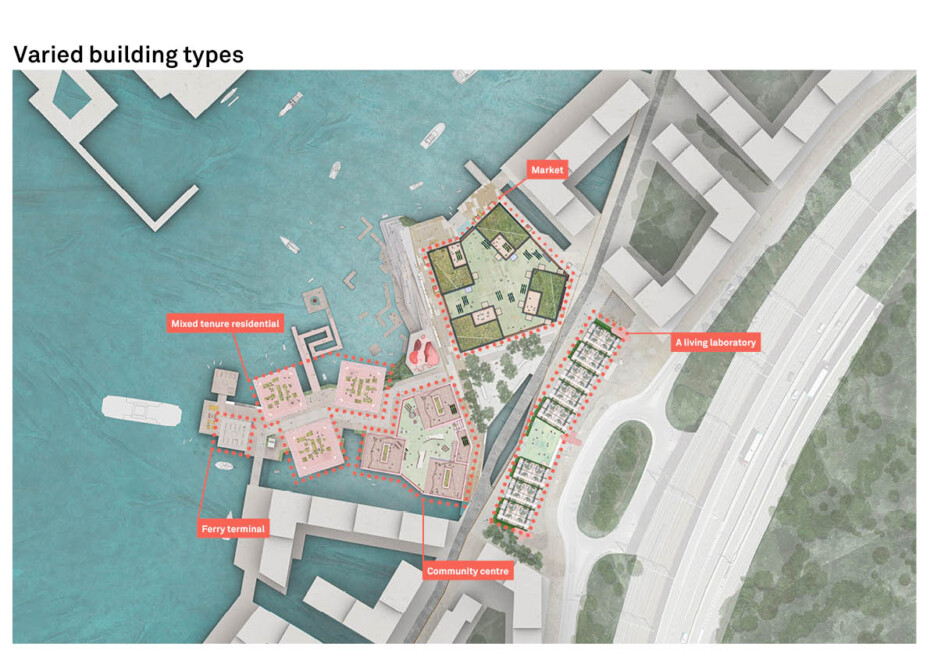

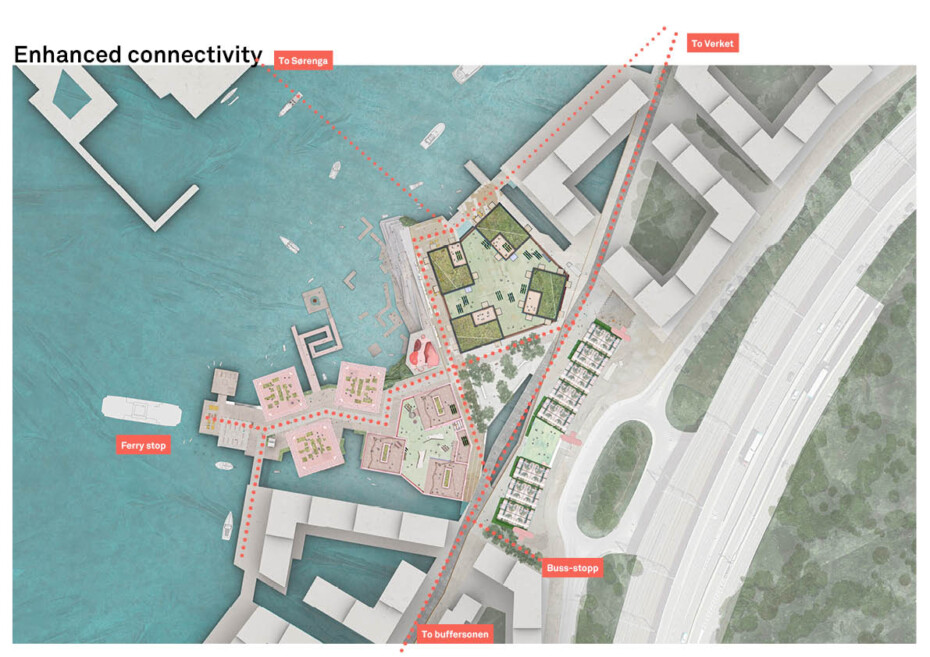
To transform this industrial space into a new mixed-use neighbourhood, we created new connections and transportation routes to Oslo’s central, eastern and southern neighbourhoods by extending Oslo’s harbour promenade. Furthermore, this creates space for leisure activities adjacent to the water.
The project has been designed with sustainability at its core, focusing heavily on carbon reducing methods. All new buildings are designed to create better ecological conditions, contributing to the much needed restoration of marine life in the Oslo fjord.

Grønlikaia will be developed on a series of slender steel piles which form a minimum of decking and slabs above water allowing light and water circulation to the sea below.
Repurposing the maritime steel left from Norway’s oil industry not only saves carbon, but also makes the decommissioning process more environmentally efficient.

Above water, the development is built using either contemporary timber structures, or recycled building elements, such as reclaimed bricks or recycled steel sections.







